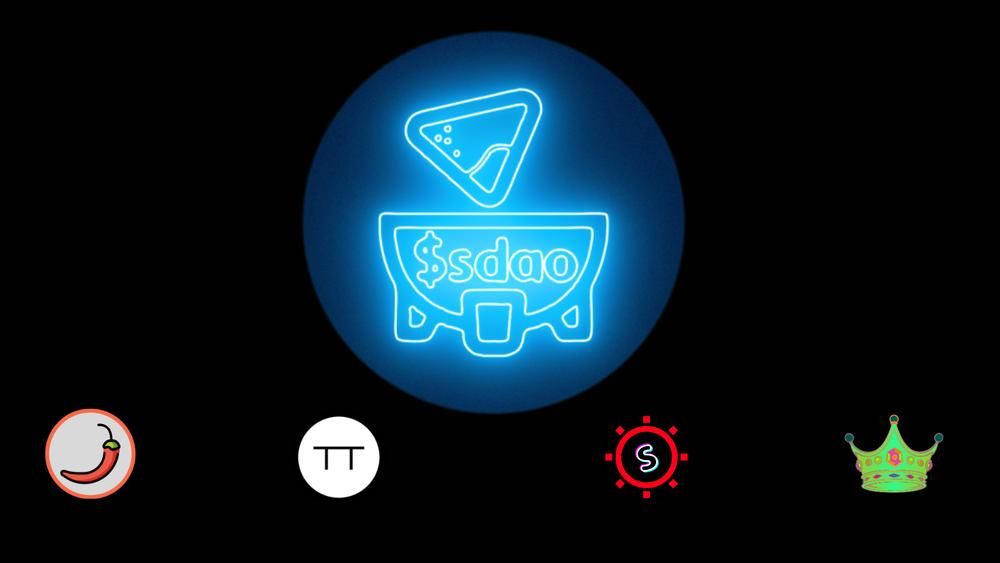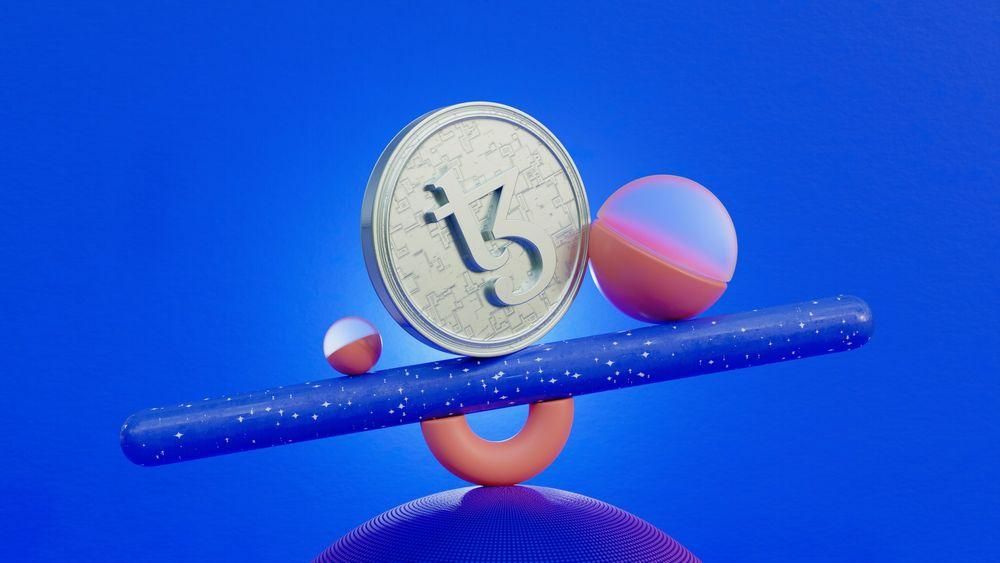From Experiment to Community-Governed Ecosystem: Interview with Genius Contracts Founder, ArriJabba
The founder of Genius Contracts tells us how he created a community-governed ecosystem of dApps.
3,000 words, 15 minute read

Editorial note: The following article contains discussion of Decentralized Finance (DeFi). DeFi refers to a relatively new financial system based on blockchain, that decentralizes the infrastructure, processes, and technologies used in traditional financial transactions. As such, when it comes to DeFi, the regulatory framework that exists around traditional finance is incomplete and evolving. It is important that readers do their own research, and understand that coverage of DeFi products and services on Spotlight does not constitute endorsement by either the Spotlight editorial board, Blokhaus Inc, or any affiliated organizations.
Genius Contracts is a small development team on Tezos that has built out an ecosystem of interoperable products governed by a community that goes by the name ‘SalsaDAO’. The products in this ecosystem include: the Spicyswap DEX, Matter DeFi, a gaming hall with a variety of on-chain games, a market place for on-chain NFTs (which is soon to include a pool-based DEX for NFTs), and a governance portal for regulating ecosystem activity. All of these products are governed by the community through the sDAO token.
Currently, all of the applications listed above, except for Spicyswap and Matter DeFi, exist on the original salsadao.xyz URL. Spicyswap and Matter DeFi each have their own webpages, though they are still listed on and accessible via the salsadao.xyz homepage. Please note that Genius Contracts plans to unite all of these applications under the salsadao.io URL in the future, helping to keep everything contained and easy to find for new users.
The interview highlights the story of Arri’s journey as an independent developer on Tezos, which started with an experimental taco shop and led to some experimentation on the Tezos blockchain, including innovations such as a DEX that utilizes its own custom TWAP oracle, flash loans, automated limit orders, a farming platform that incorporates automated buy back and burn mechanics, a series of fully on-chain NFTs that don’t rely on IPFS, and much more.
The following interview has been edited for clarity and length.
How did you get started in the crypto world/blockchain development? What led you to start doing what you’re doing today on Tezos with Genius Contracts?
Coming to Tezos was a natural fit. I’m trained as a software engineer, and that’s what I did at my previous job. I worked at big banks, so I was always next to FinTech, but I was working at dinosaur corporations where you don’t work on anything cutting edge. And then in 2017 a friend of mine introduced me to crypto.
At that time I didn’t even know what smart contracts were, but obviously you hear about Bitcoin, Ethereum, Litecoin, etc. Then one day about three years ago I went to dinner with my partner D-Star and he kept talking about Tezos. He kept saying: “you have to look into Tezos! You just have to look into it!” He was pulling up the documentation and showing me things about it, and going on and on, and finally it really was the innovation that I think hooked me. And in fact, before I got into smart contracts, I started out on Tezos as a baker.
Was there anything in particular you found intriguing or interesting about Tezos?
When I had previously looked into Ethereum, and its smart contract language, Solidity, I found it to be just glorified JavaScript. And I thought to myself: “okay, if this stuff is going to remake the future of finance, I shouldn’t be coding JavaScript…!” It was almost like a joke to me, as a developer.
But then when I started looking into what underpins Tezos, I saw that, technologically, it was much more innovative. And I’m sure I could go on and on about the core software, but basically oCaml and Michelson changed things. Tezos widens the range of what I can do, technically speaking. And also from a community standpoint. Ethereum was already saturated, where Tezos was not, so I could get in front of a community and build something with more direct visibility.
What was your first project on Tezos? How did you come to form Genius Contracts?
The beginning of the story starts with the Tezos taco shop in March 2021 - these were fully on-chain taco NFTs [ed. note - the original site is now defunct]. The guy who made Sudoswap on Ethereum is actually my idol, and before I even made one smart contract I saw his 0xmons which are fully on-chain NFTs on Ethereum. I thought it was pretty crazy that he did that on Ethereum because its very expensive, so I thought I could do it on Tezos cheaper and cooler.
At that time there was also this NFT marketplace that came out on Tezos called TZ Colors, and which were these color cards that you could buy and put up for auction over and over, and it was very popular. And I thought: “If TZ Colors are getting a lot of traction, let me make these tacos real quick.” So I forked the TZ Colors marketplace for the taco shop website. I didn’t really know what was going to happen, but I needed to put something on this blockchain as soon as possible because there’s a bunch of users who are just itching for something to connect their temple wallet to and something to have fun with, you know?
Keep in mind that at that time, people on Tezos were just looking for something to do, and there was a very limited amount of applications available. There was Hic et Nunc, but not many other things. So it was exciting and I was very surprised when I started getting traction on Twitter, since at this time that was my only means of communication!
So what started as just an experimental test site for my smart contracts ballooned quickly, and it turned into what we now call the famous ‘Taco Wars’! This was basically a transaction battle because the pricing of each taco would increase after every new purchase, so you had to make sure you weren’t trying to buy at the same time as someone else, otherwise had to just keep trying it, redoing it, etc.

Did anything come out of the Taco shop after all was said and done? How did things evolve from there?
Yes, there was the ‘Red Salsa’ token, rSAL. There was a lot of momentum, and I figured I should probably try to do something with it. So I said, “Okay: now people have tacos. What else can I give them?” Users who held tacos got some Red Salsa and that’s what really made it go viral, I would say. And that was when everything changed and caused me to step back and say “Wait a minute, what am I actually doing here?”
How did Red Salsa work?
At first it was just a simple air drop of rSAL tokens to people who held tacos, but this led to what were actually the first yield farms on Tezos. No one had ever done a yield farm on Tezos, so I wanted to be the first one to do that! But I needed a platform to do it, so I created salsadao.xyz to put some yield farms up.
Basically it worked like this: if you had a taco, you could get some rSAL, which you could then stake in a farm on salsadao.xyz, and that would yield you some sDAO [the SalsaDAO governance token]. And the slogan became: ‘all roads lead to sDAO’. And so this was like the official creation of the SalsaDAO and it put a full entity behind the taco shop.
There were other things sprinkled throughout this process that made it fun for users, like a 2 for 1 happy hour, where you could burn a taco and get twice the amount of rSAL for it in a certain window of time. And this was also around the time when the Quipuswap DEX had come out, so we were allowing people to farm sDAO with rSAL/XTZ liquidity pool tokens. With liquidity, the happy hour deals turned into arbitrage opportunities and people could make a nice profit if they were paying attention.
I had no clue what I was doing! But again, it was just experimentation, and the community received it well giving us some momentum. This is when I officially formed Genius Contracts. With a community, we had a platform to start building out a full product line.
What happened next?
All the DeFi gamification gave me the idea for an on-chain Casino, which was the first kind of on-chain gambling on Tezos. For this we used a new token, Green Salsa or gSAL, which you could redeem Red Salsa for, 1 to 1. It started out with a dice game where someone would post a bet, and another person would take it and they would bet against each other.
But we noticed it was hard to get two anonymous parties to play against each other - it was cumbersome and slow. So we eventually applied the house bankroll concept to our Casino. Basically, users could invest in a bankroll with a programmable house edge, such that the losing bets would grow their portion of the pool [ed. note - like they were collecting fees]. It’s similar to how DEXs work with liquidity, but we just used it for the Casino house bankroll for people to place bets against. We created bots to handle all the resolves, and this showcased the power of Tezos because the gas is so cheap. These kinds of automation are a Tezos-only feature.

The Spicyswap DEX was conceived shortly after this time - how do you think everything from the yield farms up to the Casino bankroll played into your vision for Spicyswap?
At this point I started thinking from a platform mindset - I decided we weren’t going to just continue releasing one-off applications one after the other. I wanted to form the SalsaDAO ecosystem and start building a unified landscape. So I said: “Okay, what do I need?” I
In order to make Matter DeFi, I needed to build my own custom DEX from scratch
I had the idea for Matter DeFi before I even thought of Spicyswap actually, and that’s because I wanted to make our yield farms work on certain mechanism, specifically I wanted them to use automatic buybacks and burn. But when I was trying to do this with Quipuswap, it was too simple to execute the idea. It didn’t do everything that I needed it to do, basically. So in order to make Matter DeFi, I needed to build my own custom DEX from scratch. That honestly was the core reason for Spicyswap - I needed it for Matter DeFi - It was also a way for me to raise some money.
You said you needed certain things from a DEX, so what did you build Spicyswap to do? What are some of its unique core features?
Spicyswap is inspired by the Ethereum DEX Uniswap [V2] - it’s a Uniswap V2 inspired DEX built on Tezos from the ground up. Most Tezos DEXs are built off of the Uniswap V1 model. That meant that under the hood, Spicyswap was capable of more complex functions.
For example, Spicyswap has flash loans. We use flash loans for our ‘SVault’ product, which is a leverage trading that utilizes Youves CDP vaults in one click, but from the Spicyswap UI. You can make leverage trades, and you can de-risk your vault in one transaction using flash loans.
No other DEX has limit orders yet, and that’s because these are only possible on Spicyswap because I made it really easy for contracts to actually trade with other contracts
We also added what’s called ‘spice farming’, which is like a protocol level switch that routes one third of all trading fees to our spice token {$SPI} holders. And Spicyswap also has decentralized limit orders built on top of it. This is another example of the power of automated transactions on Tezos - users can set a price that they want to buy or sell some token at, and bots that I or anyone else can run execute the order when the price is hit. No other DEX has limit orders yet, and that’s because these are only possible on Spicyswap, because I made it really easy for contracts to actually trade with other contracts.
And Spicyswap has its own custom built price oracle. We don’t actually use off-chain servers and such for our automated actions. We have what’s called time weighted price oracles in each Spicyswap pool, where we can get a price for that token at any time. And we actually use that for Matter DeFi’s automatic buyback and burn mechanics too. So the price oracle is the core thing. That’s the big thing that Spicyswap has made, in addition to flash loans, limit orders, spice farming, and all that good stuff.

Photo by Alexander Grey / Unsplash
Tell us about Matter DeFi. How does Matter DeFi fit into the ecosystem?
Matter DeFi is a response to the fact that, early in the journey, I realized that I’m always going to need yield farms as an incentive program for growing liquidity because deep liquidity makes it easier to do things from trading to using flash loans. A yield farm is a classic way to increase liquidity on your DEX. Everyone’s used to this model, and if it can be sustainably implemented, it can be effective.
With automatic buy back and burn mechanics of Matter DeFi, the user can know that 100% of those fees go directly to buying back tokens and burning them, immediately
The flagship feature of automatic buyback and burn [of the MTTR token] is a response to some of the farming implementations that came out on Tezos early on, where platforms were inflating their tokens willy-nilly, and making promises to do manual burns of the token with fees that were collected (ed. note - which helps to take sell pressure off of the emitted token by regulating its inflation rate). But I can actually look on-chain and see if people are burning tokens and actually fulfilling their promises.
With automatic buy back and burn mechanics of Matter DeFi, the user can know that 100% of those fees go directly to buying back tokens and burning them, immediately. So the aim with this bit of technology was to try and offer mechanics that tend toward sustainable yield and by working with and adjusting to market demand. We’ve burned a ton of MTTR. And they’re still going a year later!
Tell us about the DAO component of the SalsaDAO. Why was it important for you to work toward a fully functional DAO?
We made SalsaDAO because really I knew that somewhere along the line I was going to make things that had very important parameters, such as, for example, how high the APRs on Matter DeFi should be, how high should fees be, etc. So at the level of policy and setting these important monetary parameters, the community can be in charge of and we can figure these things out together.
Now the sDAO token is one step on that path. It’s very easy to control everything and slant things in a certain way so that the DAO turns into a glorified community poll. The sign of a functioning DAO is having failing proposals, which we have a couple of those for Matter DeFi. When I build platforms, I need other people’s opinions to actually go into that platform and help me shape it.

Photo by / Unsplash
What’s the newest addition to the SalsaDAO ecosystem? What has Genius Contracts been up to lately?
We’ve definitely been increasing our NFT footprint by a lot this summer. We’ve developed our own dynamic, fully on-chain NFT standard that cuts out dependency on IPFS. And we currently have a beta version of our SalsaDAO NFT DEX which we are calling ‘ArtDEX’, which will be a pool based NFT trading marketplace system. You might think of it as a mix of an NFT marketplace and DEX, where people can create pools of assets that other people can freely trade in and out of, much in the same way that you interact with pools on a DEX. It’s like having a liquidity pool in a DEX, and it brings NFTs closer to DeFi.
Salsadao.io is the grand unification that will help us scale in terms of UI and UX, and it’s also about continuing to innovate as hard as we can on smart contracts with the technology that Tezos offers
On the horizon we have salsadao.io, which will be the grand unification of the ecosystem - there’s Spicyswap at the heart, Matter DeFi, the NFT marketplace, and the gaming hall, and they all work together. But they are currently fragmented.
So salsadao.io is the grand unification that will help us scale in terms of UI and UX, and it’s also about continuing to innovate as hard as we can on smart contracts with the technology that Tezos offers. With this, salsado.io plans to make heavy use of rollups. And that’s something I’ve wanted to do for a while, especially with the gaming hall, for things like poker and blackjack. Salsadao.io is just a vehicle to keep us moving. And we’re responding to long term user feedback.
What do you think the Tezos community does right?
I think the amount of support the community gives for projects that just come out is always very, very good. The people are great, and of course there’s a big NFT sector that’s much nicer than anywhere else.